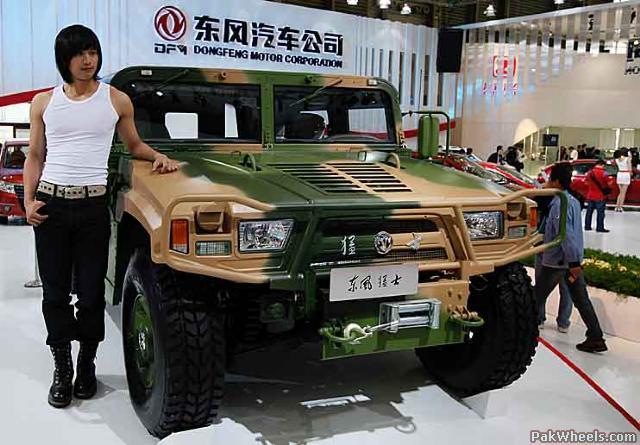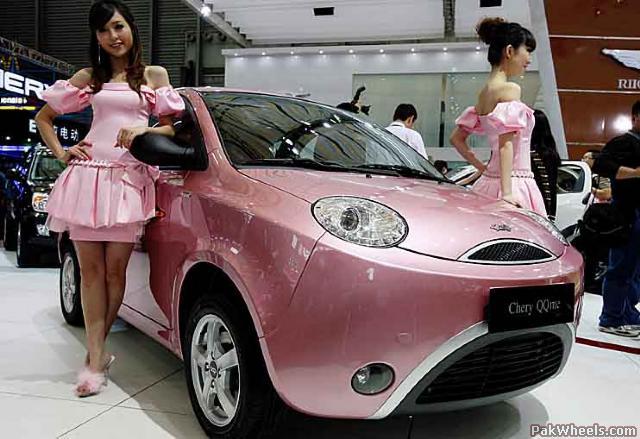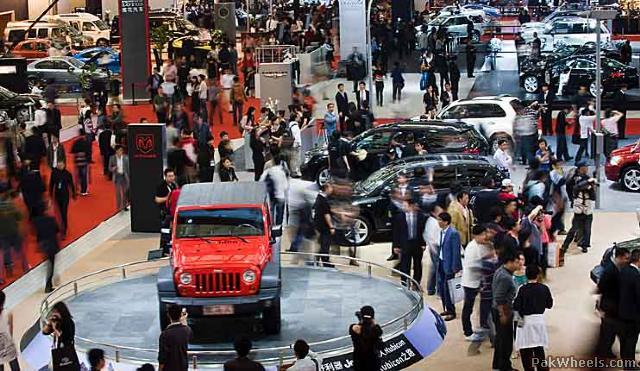SHANGHAI CAR SHOW: WORLD FOCUS ON HOPE IN THE EAST
International automakers have converged on China's commercial capital, Shanghai, for a show that, once marginal, has become a major showcase - and battleground - for the world's only major growing car market.
The bi-annual Shanghai auto show will open to the news media on Monday, then on Wednesday to the public, and is expected to feature an unprecedented number of vehicle launches, reflecting the growing importance of this market for automakers everywhere.
It comes right after Sunday's Formula 1 GP - another Shanghai event symbolising the city's obsession with cars
"The number of new launches, especially from global manufacturers, will set it apart," said Paul Gao, CFO of Chery Quantum Auto, a new unit of Chery Automobile that is developing upscale models for the domestic automaker.
"Many automakers now see the Chinese market as at the forefront."
China, the world's second-biggest auto market, has revived sales after a late-2008 slump through tax cuts and rebates that are pulling small vehicles out of showrooms nearly as fast as the factories can assemble them.
Sales hit a monthly record of 1.11-million in March, 2009, exceeding US sales for the third consecutive month and up five percent from a year earlier.
While the surge to the front is mainly a result of deteriorating markets around the world the gravitational centre of the world auto market has clearly shifted to China and other emerging markets
Gao said the uptick in sales so far in 2009 caught many automakers off guard.They had cut production in the expectation that 2008's salesslowdown would persist in China, .
"There are supply shortages and, in some cases, automakers couldn't meet demand," he added. "Joint ventures rely on imported components and many of the tier-one global suppliers were already on the verge of bankruptcy."
These, however, are the sort of headaches automakers pray for at a time when sales in the US have fallen by close to 40 percent in annual terms.
China is also a lifeline for ailing General Motors, whose 137 004 sales in China in March were 24.6 percent up on a year earlier. Tax cuts and other government policies focused on encouraging sales of small, fuel-efficient cars pushed deliveres from its mini-vehicle joint venture, SAIC-GM-Wuling, up 38 percent to 90 784.
Kevin Wale, president and MD of GM China, said GM intended to double its sales thereto more than two-million a year by 2014. Among its strategies: launching or upgrading more than 30 models during those five years.
It's a far cry from decades past when vehicles such as the VW Santana, a 1980's model made by VW AG's joint venture with Shanghai Automotive that remains the staple of Shanghai's taxi fleet, were among the few choices on the market.
Now, to compete, Chinese and foreign automakers need a portfolio covering the whole spectrum from inexpensive compacts favoured by first-time car buyers to the high-margin luxury models needed to compete with foreign-brand sedans.
Thomas Schiller, MD of Arthur Little China, which specialises in the auto industry, added: "Vehicles must now be tailored to the preferences of increasingly particular Chinese customers.
"It doesn't work to take some car and just localise it. Chinese customers are now more educated and US designs are losing out to Japanese and European models"
Chinese automakers, still unable to successfully challenge their foreign rivals in affluent Western and Japanese markets, are striving to bring quality up to scratch while also going after the small-car market in which their home-player status gives them cost and distribution advantages.
Among those which have made headway is privately owned Geely. The company is based near Shanghai and has worked hard to upgrade its sedans after failing in European markets, several analysts said.
Meanwhile, global automakers are struggling to get their products right and to set up strong dealer networks - a major challenge given China's vast territory and disparate regional markets.
Schiller said: "There is huge potential for first-time buyers. They will buy a car because they need a car."
First-time buyers account for nearly 75 percent of sales but reaching all the hundreds of millions of potential car owners in this market of 1.3-billion people requires new strategies.
Most live outside the traditional auto market centres of Shanghai, Beijing and Guangzhou.
Schiller again: "The biggest challenge for most players is how to enter the tier three and four cities. It's a battlefield in the market and it will decide the next two to three years of growth in China." - Sapa-AP


